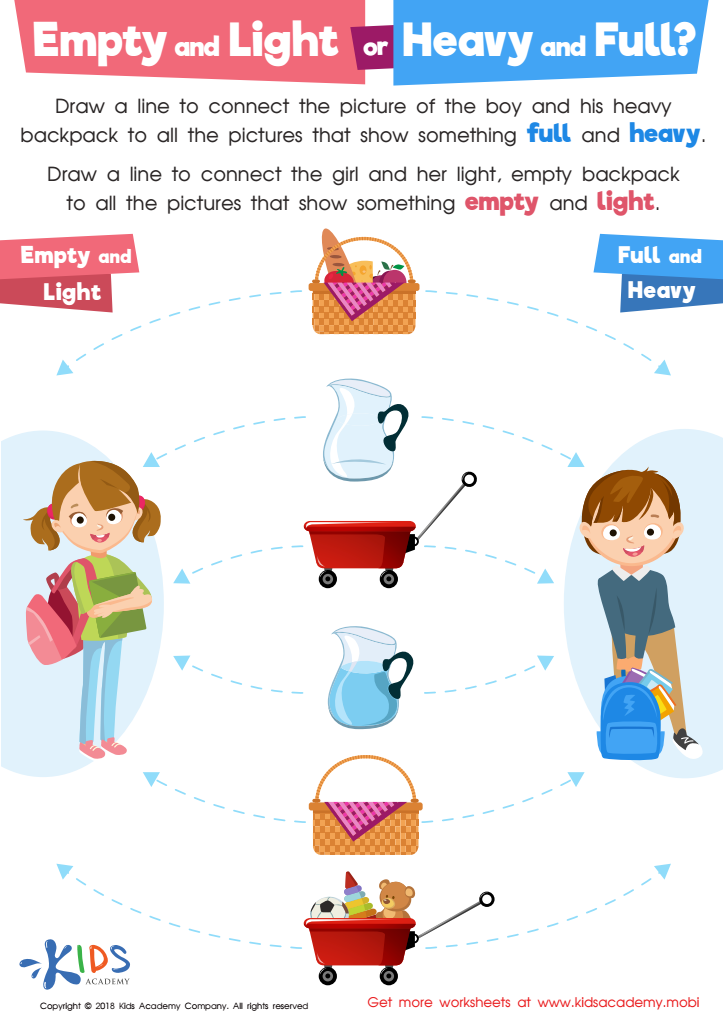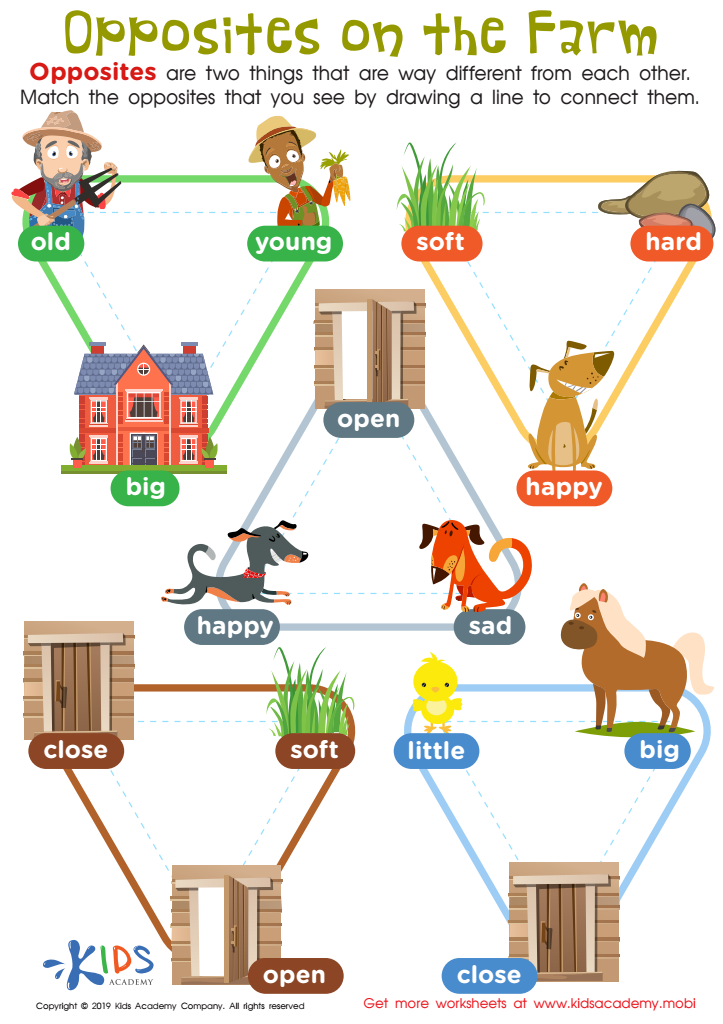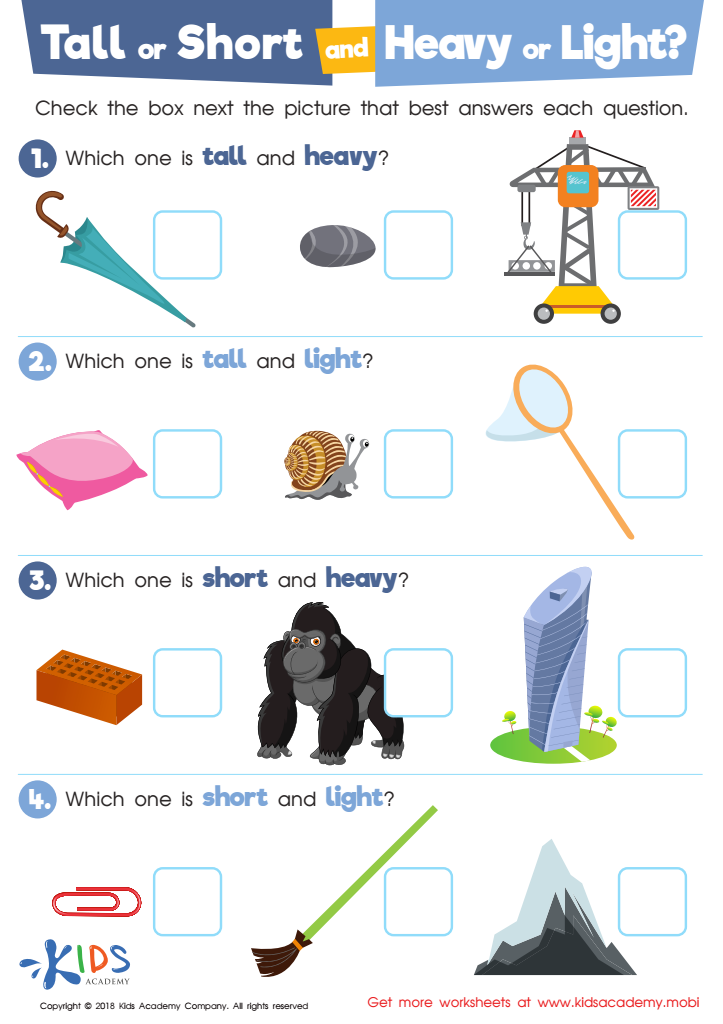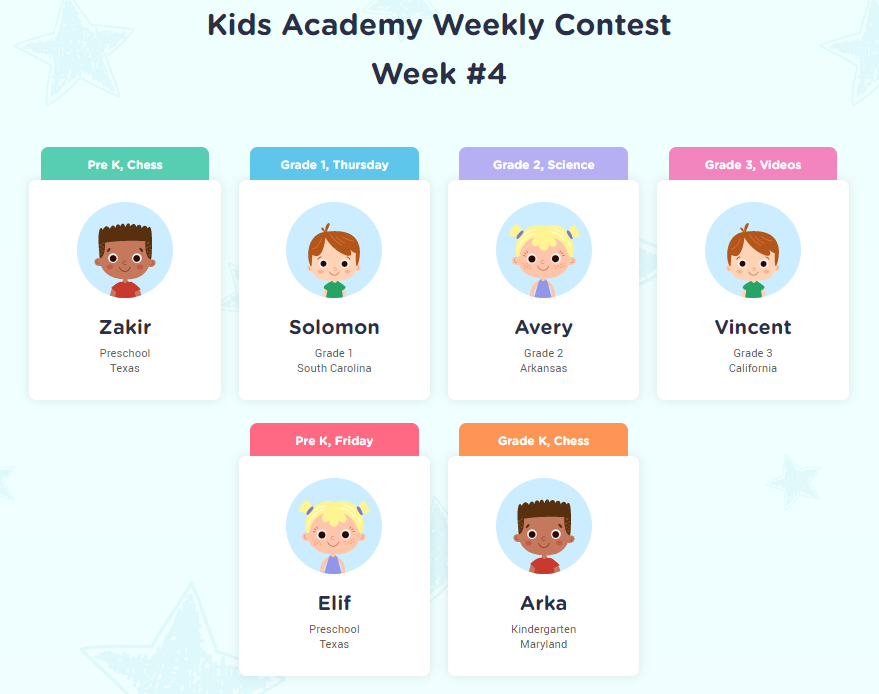Understanding opposites Math Worksheets for Ages 6-8
3 filtered results
-
From - To
Introduce young learners to the exciting world of math with our "Understanding Opposites Math Worksheets for Ages 6-8". Designed specifically for children in early elementary grades, these engaging worksheets focus on building crucial math skills through the concept of opposites. Featuring vibrant illustrations and interactive activities, kids will delight in exploring differences such as big and small, more and fewer, as they develop a deeper understanding of essential math principles. Perfect for classroom and home use, our worksheets make learning fun and accessible, laying a solid foundation for future math success. Equip your child with the tools they need and watch them thrive!


Empty and Light or Heavy and Full? Worksheet


Opposites on the Farm Worksheet


Tall or Short and Heavy or Light? Worksheet
Understanding opposites in math is crucial for children aged 6-8 as it builds foundational skills that support broader mathematical concepts and cognitive development. Opposites, such as "big" and "small" or "few" and "many," help children comprehend relational thinking and comparisons, which are essential for tackling more complex math problems later on.
First, grasping opposites enhances a child's ability to think critically and understand relative concepts. Comparing and contrasting attributes fosters logical reasoning, enabling children to classify and organize information effectively. These skills are integral when they encounter arithmetic operations and measurements later, where understanding the 'opposite' nature of addition and subtraction, for example, becomes vital.
Second, familiarity with opposites lays the groundwork for algebraic thinking. Children start to understand that numbers and operations interact in predictable ways, such as knowing that subtracting a number undoes addition. This early recognition is crucial for solving equations and understanding variables in higher grades.
Lastly, practicing opposites in math nurtures problem-solving skills in real-life contexts. For example, knowing the opposite of "full" is "empty" helps children make better sense of everyday situations and fosters independence.
In summary, parents and teachers should care about teaching opposites in math to children aged 6-8 because it equips them with essential analytical skills, fundamental arithmetic understanding, and practical problem-solving abilities that pave the way for future success in mathematics and life.
 Assign to My Students
Assign to My Students


















